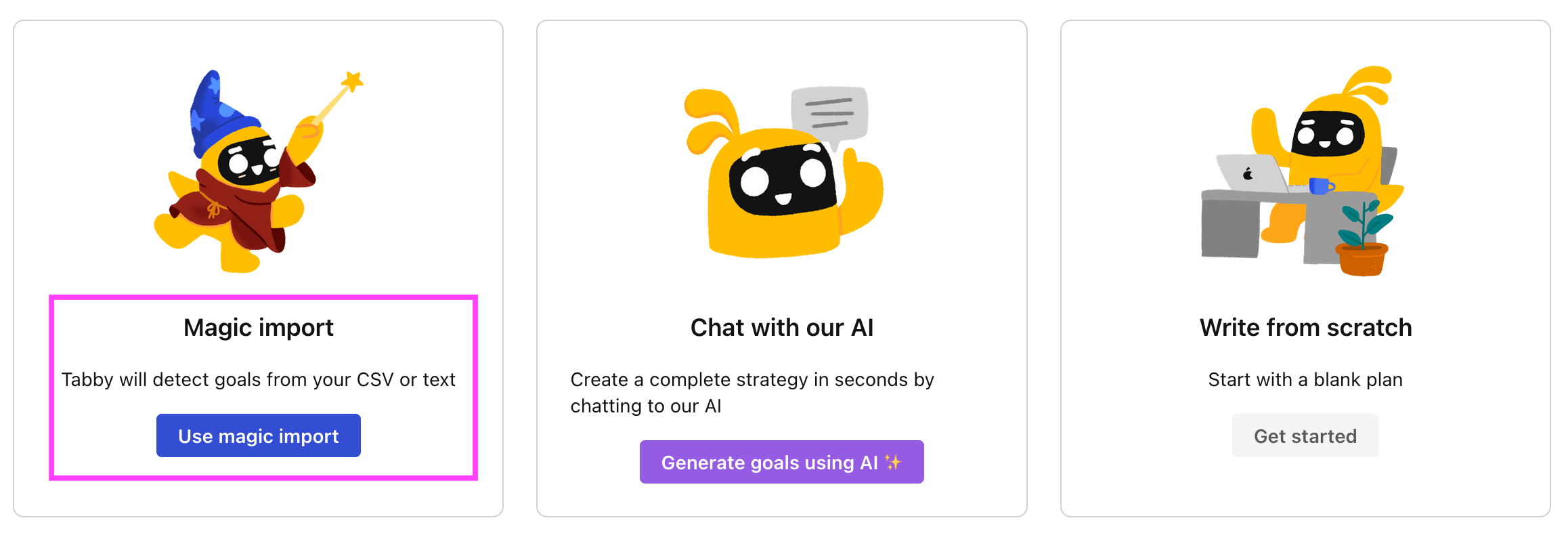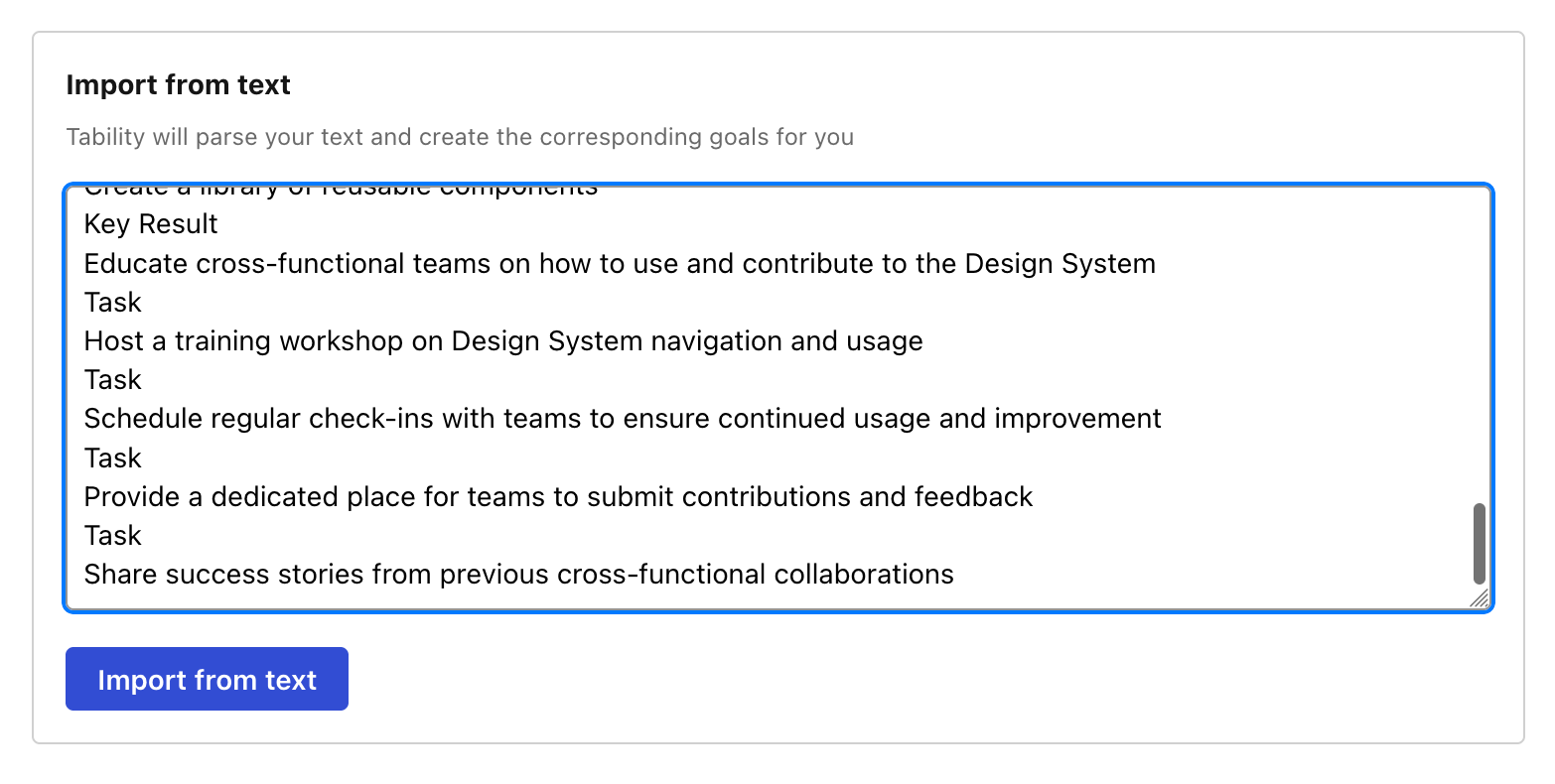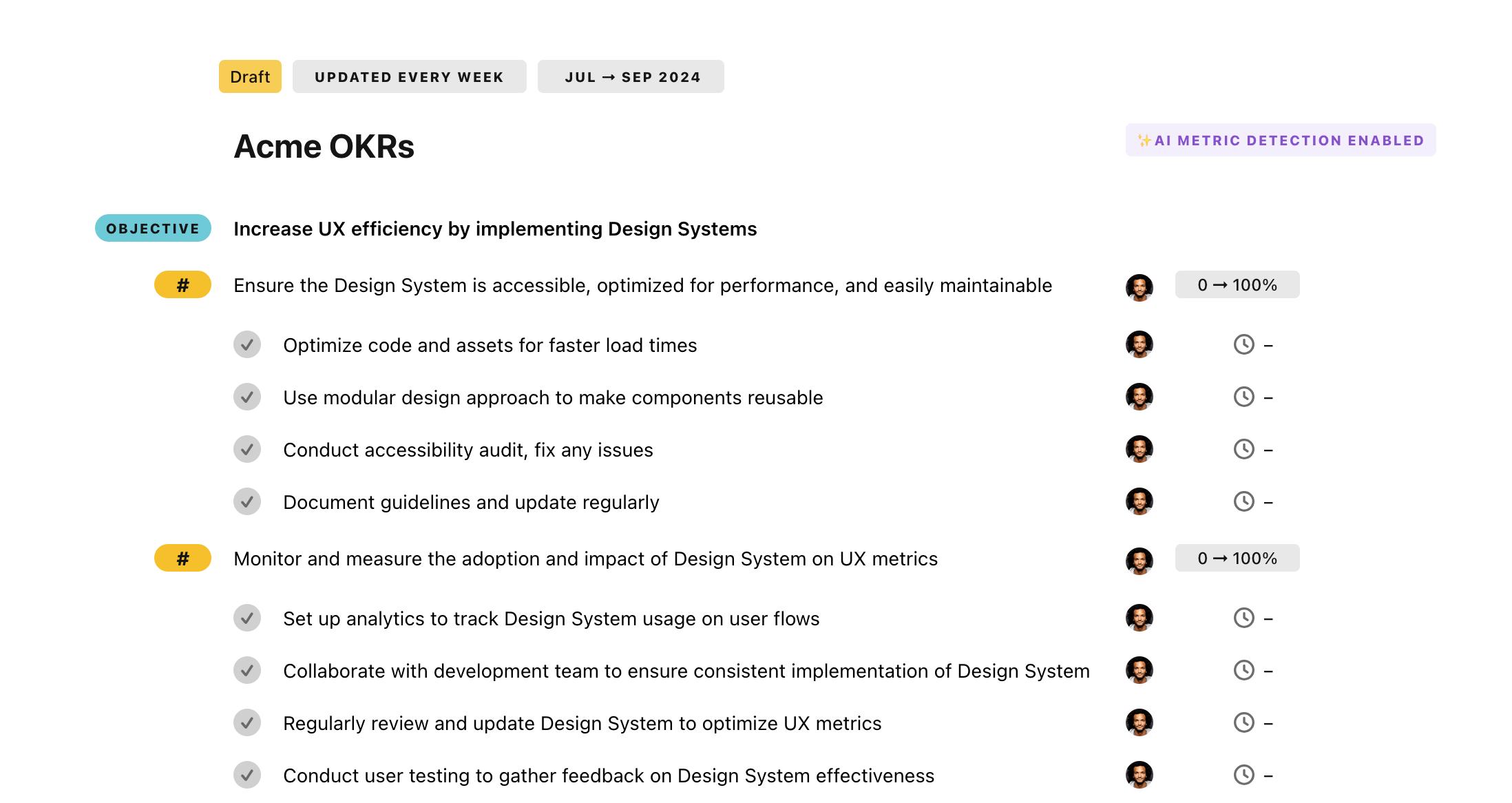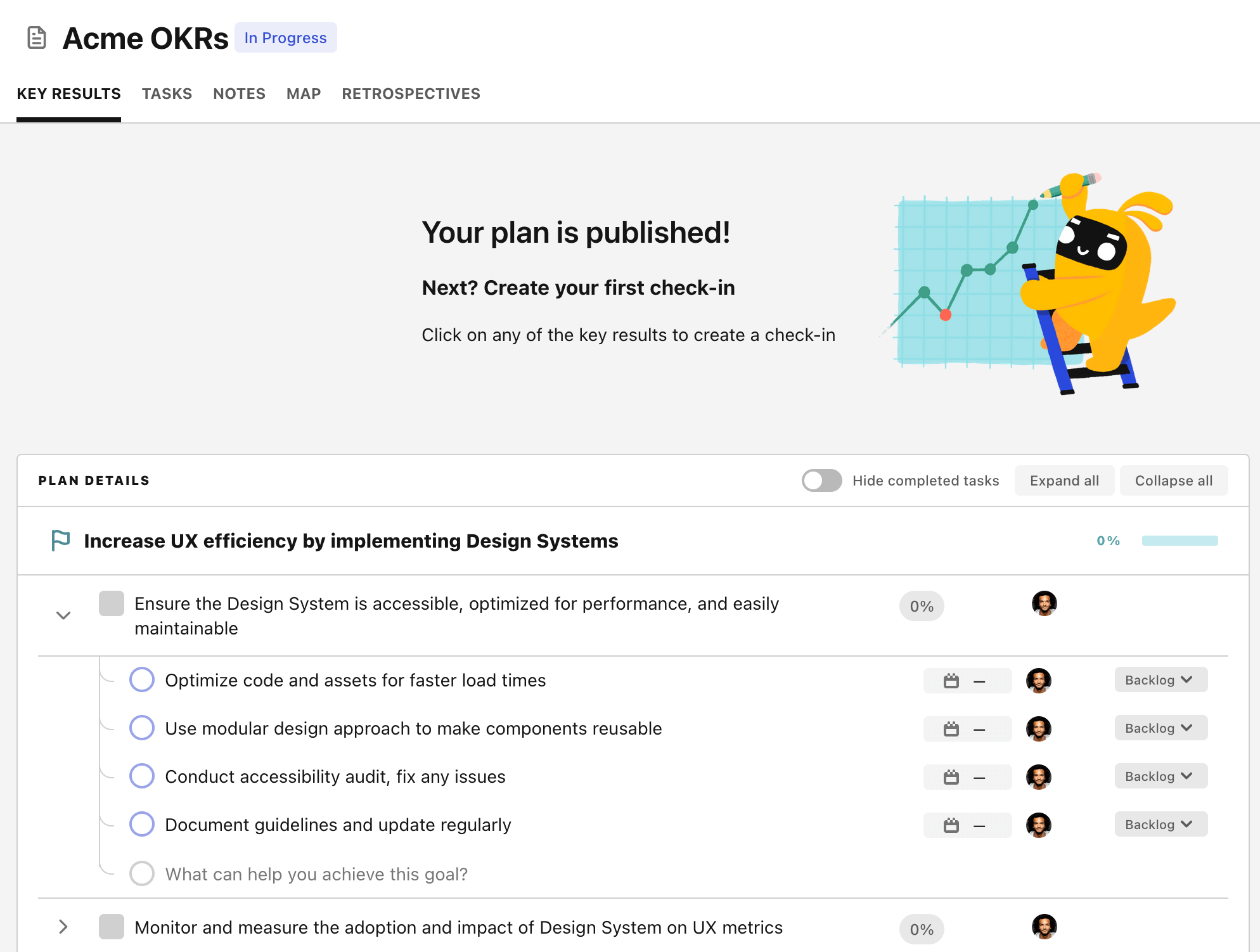OKR template to establish an effective grant research volunteer team
Your OKR template
The second objective is focused on increasing yearly income by securing at least three new grants. To reach this goal, the initiatives include following up on sent proposals, crafting compelling grant proposals, and seeking out grants that align with the company's vision.
The last objective aims to recruit and train a minimum of five volunteers skilled in grant research by the end of the current quarter. The plan for achieving this is by posting volunteer requirements on various platforms, interviewing candidates to assess their respective skills and motivations, and scheduling training sessions for the selected volunteers.
The overall aim is to establish a team of volunteers who can help to boost the company's income by securing more grants and funding opportunities.
ObjectiveEstablish an effective grant research volunteer team
KRIdentify and apply for at least 20 potential grant opportunities
Prepare necessary documents for grant applications
Research and compile a list of 20 potential grant opportunities
Submit applications for identified grants
KRBoost yearly revenue by successfully securing at least 3 new grants
Follow-up consistently on sent proposals
Craft compelling grant proposals highlighting our strengths
Research potential grants aligned with our company's vision
KRRecruit and train 5 skilled volunteers for grant research by end of quarter
Post volunteer requirements on job boards and social media platforms
Interview candidates to assess relevant skills and passion
Schedule and conduct training sessions for selected volunteers
How to edit and track OKRs with Tability
You'll probably want to edit the examples in this post, and Tability is the perfect tool for it.
Tability is an AI-powered platform that helps teams set better goals, monitor execution, and get help to achieve their objectives faster.
With Tability you can:
- Use AI to draft a complete set of OKRs in seconds
- Connect your OKRs and team goals to your project
- Automate reporting with integrations and built-in dashboard
Instead of having to copy the content of the OKR examples in a doc or spreadsheet, you can use Tability’s magic importer to start using any of the examples in this page.
The import process can be done in seconds, allowing you to edit OKRs directly in a platform that knows how to manage and track goals.
Step 1. Sign up for a free Tability account
Go tohttps://tability.app/signup and create your account (it's free!)
Step 2. Create a plan
Follow the steps after your onboarding to create your first plan, you should get to a page that looks like the picture below.

Step 3. Use the magic importer
Click on Use magic import to open up the Magic Import modal.
Now, go back to the OKR examples, and click on Copy on the example that you’d like to use.

Paste the content in the text import section. Don’t worry about the formatting, Tability’s AI will be able to parse it!

Now, just click on Import from text and let the magic happen.

Once your example is in the plan editor, you will be able to:
- Edit the objectives, key results, and tasks
- Click on the target 0 → 100% to set better target
- Use the tips and the AI to refine your goals
Step 4. Publish your plan
Once you’re done editing, you can publish your plan to switch to the goal-tracking mode.

From there you will have access to all the features that will help you and your team save hours with OKR reporting.
- 10+ built-in dashboards to visualise progress on your goals
- Weekly reminders, data connectors, and smart notifications
- 9 views to map OKRs to strategic projects
- Strategy map to align teams at scale